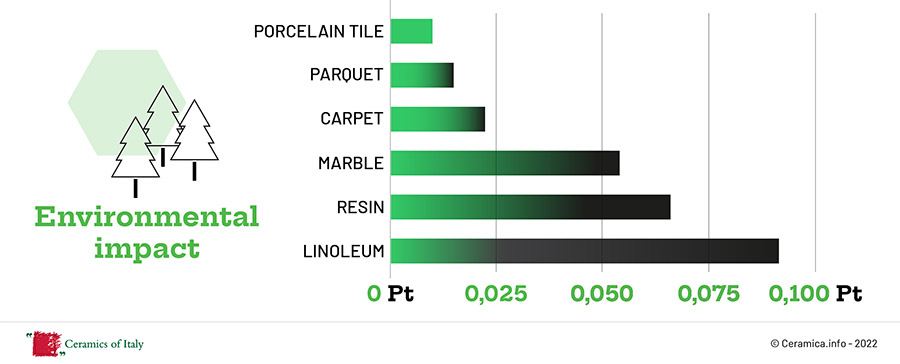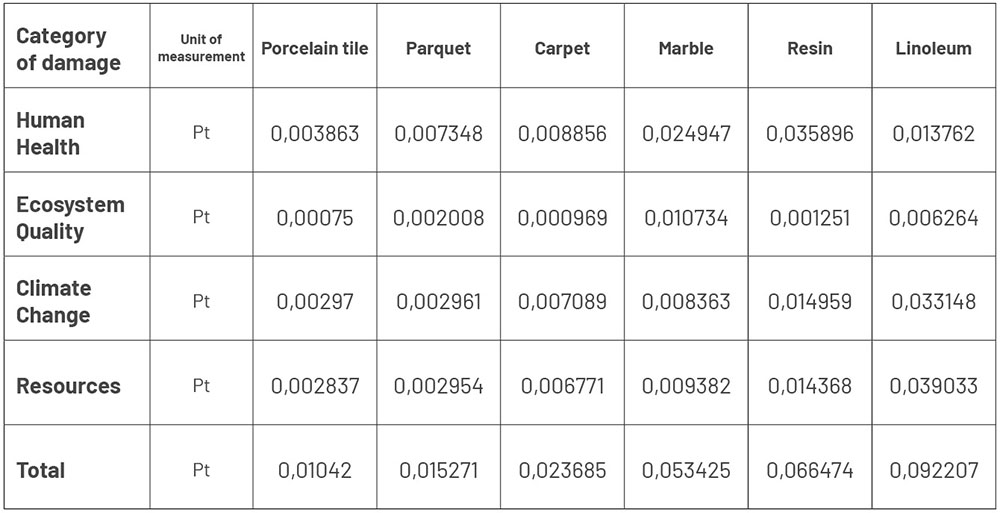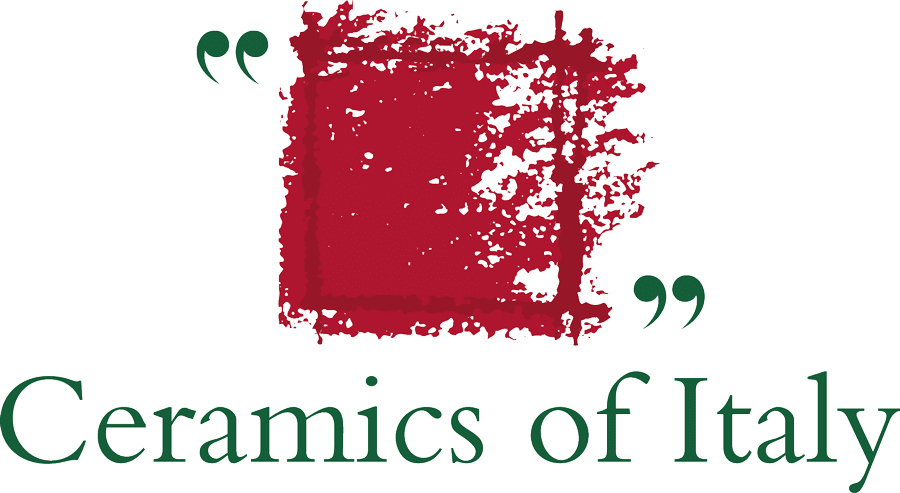Comparing different materials is a complex exercise and may fail to produce clear results owing to differences in methodology and assumptions as well as the use of different databases.
The Life Cycle Assessment (LCA) carried out by the University of Modena and Reggio Emilia in 2012 with the aim of comparing the emissions and impacts associated with the production, use, and end-of-life recycling or disposal of certain types of flooring shows that porcelain stoneware has a lower average environmental impact than materials such as marble, resin, linoleum, carpet, and parquet.

Note: The values shown in the chart are the sums of the impacts indicated in the table below, taken from the study “Comparative LCA analysis of different types of floor covering”. The scale adopted in the study is points (Pt) and not percentages as incorrectly reported in a previous version of this article.
The Life Cycle Assessment method
ISO 14040 defines an LCA as “a systematic set of procedures for compiling and examining the inputs and outputs of materials and energy and the associated environmental impacts directly attributable to the functioning of a product or service system throughout its life cycle”.
The University of Modena and Reggio Emilia used the “cradle-to-grave” analysis approach in its study to examine all stages in the life cycle, from raw material extraction to industrial production, use, and end-of-life recycling or disposal.
To determine the environmental impact of each material, the following criteria were analyzed:
- carcinogenic and non-carcinogenic agents;
- respirable organic and inorganic pollutants;
- ionizing radiation;
- ozone layer depletion;
- aquatic and terrestrial ecotoxicity and acidification;
- land occupation;
- water eutrophication;
- global warming;
- non-renewable energy;
- extraction of minerals.
The results of the LCA study
The various impacts were normalized using a points system (Pt) to enable them to be added together and compared.
The life cycle of porcelain stoneware has a lower environmental impact than marble, resin, linoleum, carpet, and parquet for almost all the criteria analyzed. This means that porcelain has a lower average environmental impact than the other types of flooring examined.
Comparison between the impacts of flooring materials by impact category using IMPACT 2002+

Source: Comparative life cycle analysis (LCA) of different types of floor covering. University of Modena and Reggio Emilia (2012)
Each damage category is in turn subdivided into impact categories.
IMPACT 2002+ impact and damage categories
| Human toxicity | HUMAN HEALTH(DAILY) |
| Respiratory inorganics | |
| Ionizing radiation | |
| Ozone layer depletion | |
| Respiratory organics | |
| Aquatic ecotoxicity | ECOSYSTEM QUALITY (PDF.m².an) |
| Terrestrial ecotoxicity | |
| Terrestrial acidification/nitrification | |
| Aquatic acidification | |
| Aquatic eutrophication | |
| Land occupation | |
| Global warming | CLIMATE CHANGE (kgeq CO2) |
| Non-renewable energy | RESSOURCES (MJ) |
| Mineral extraction |
Source: Comparative life cycle analysis (LCA) of different types of floor covering. University of Modena and Reggio Emilia (2012)



 Architects
Architects
 Construction firms
Construction firms
 Dealers
Dealers
 Public
Public

